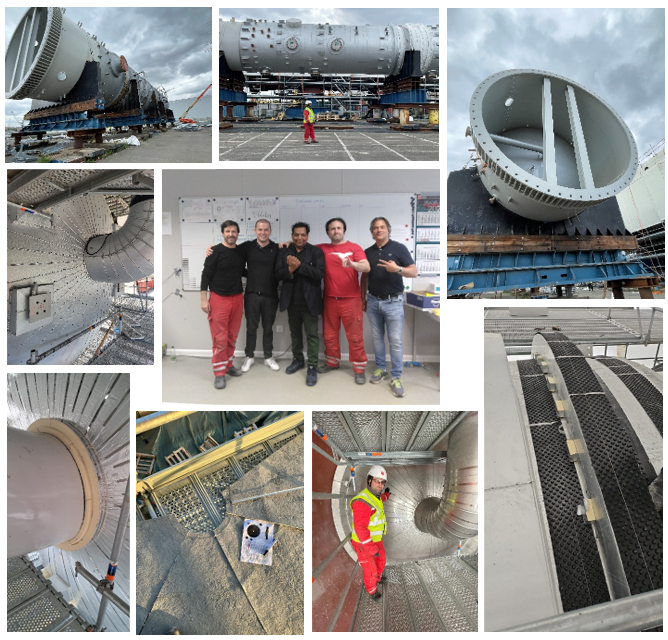Smart insulation under high pressure: how team Altrad tackles the Ineos project

In spring 2024, a technically demanding mission began for Altrad: insulating equipment for Ineos, Project One. What started with calculations and documentation in April quickly grew into a large-scale site with up to 70 employees on site. The task?Specific insulation work on seven industrial ‘splitters’: gigantic columns that required about 10 layers of insulation on some equipment.
A technical feat from start to finish
From June, work was carried out on the site using various types of cold insulation down to -60°C, including Pyrogel XTF, Cryogel Z, PIR and Foamglas. At the same time, thermal insulation was installed on other splitters using Rockwool and again Pyrogel XTF. Not an easy job, as each zone required a specific approach - from insulation to custom cladding.
‘Around the columns, we had to apply multiple layers of Pyrogel, each time using different techniques. That created a lot of unforeseen work and challenges,’ says Kurt Mesut, project manager at Altrad. ‘Over the course of the project, we had to find solutions for various modifications, get them approved and document them correctly.’
Smart customisation, night work and innovative thinking on Project One
The complexity was not only in the technical work, but also in the organisation behind the scenes. Work was done in shifts, with careful division of tasks and coordination of materials and orders - all in collaboration with ALTRAD's purchasing department. The various international staff on site made for a colourful but intense collaborative process.
The day/night system meant we had to use our staff in a completely different way . De-duplicating overarching functions was certainly not obvious.
When installing insulation, moisture and condensation are a constant enemy. So we placed vapour barriers on top of the insulation and devised additional techniques for bonding it to the Pyrogel. On top of that came a protective layer of bubble wrap and custom cladding.
‘We gained a lot of experience during this project and also designed a lot ourselves,’ says Kurt. ‘The result is not only solid work, but also a more efficient and cheaper approach for the customer. One example is the trapezoidal cladding for the exterior requested by the customer. This is much more difficult to fit around a tubular unit than a corrugated sheet. We worked out a solution ourselves to make the seams fit together nicely.’
Technology as accelerator
Additional technology played a key role in helping us fly the job efficiently. Thanks to 3D scanning, we were able to determine the correct shape and radius of the round head of the splitter. This allowed us to submit our material orders much more accurately, which is a win-win for every party.
Young talent also flourished. Junior project manager Mathias Christiaansen grew in his responsibility for documentation, progress registration, Primavera (MS projects), manpower monitoring and timesheets. Quality manager Alberto Mendes, in turn, had the important task of monitoring and documenting every layer and zone.
‘It was an exciting experience for all of us,’ Kurt concludes. ‘But what a project. Complex and a real brainteaser. But also incredibly enjoyable.’
Team Altrad:
Operations Manager Major Projects: Carlisto Sitskoorn
Site manager: Kurt Mesut:
Calculation: Wannes Raats
Jr project manager: Matthias Christiaansen
Quality control: Alberto Mendes
